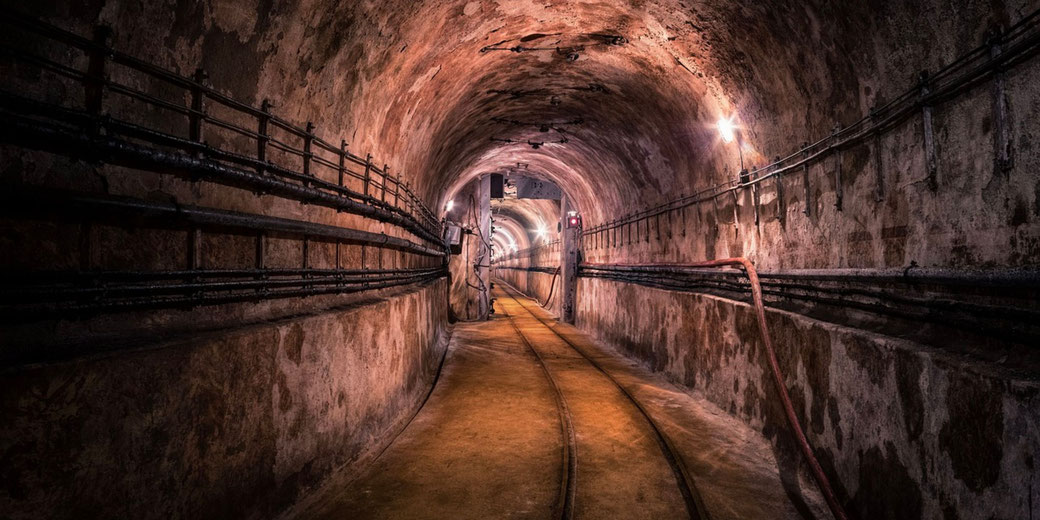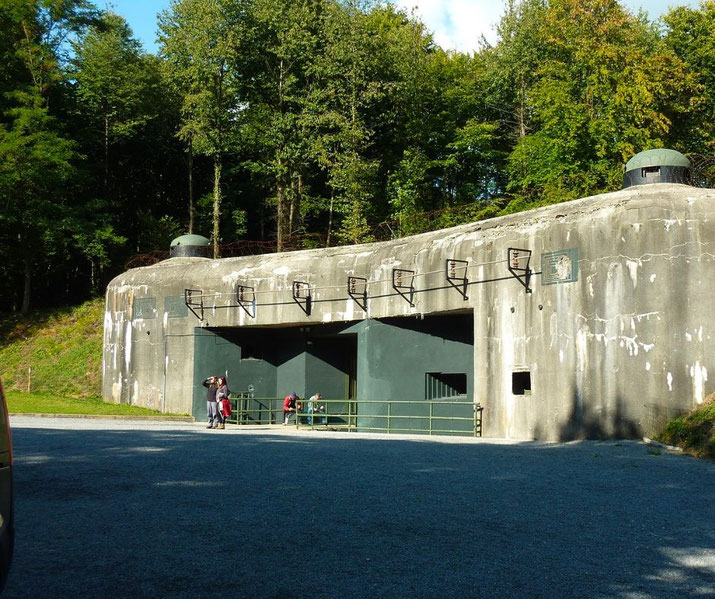The Maginot Line: France's mighty fortress that failed to stop Hitler's invasion in 1940

The Maginot Line was one of the most ambitious and controversial military projects of the 20th century. Named after André Maginot, the French Minister of War who championed its construction following World War I, it was France's attempt to deter future conflicts.
It stretched along the entire French-German border, comprising a vast network of fortifications, bunkers and tunnels.
However, it would ultimately prove to be a failure, as Nazi Germany discovered its one true weakness.
Why was the Maginot Line built?
The devastation of World War I, which raged from 1914 to 1918, left Europe in ruins and deeply scarred the collective psyche of the French nation.
France, having been a primary battleground, witnessed to the horrors of trench warfare and the consequent immense loss of life.
Then, the Treaty of Versailles in 1919 sought to impose punitive measures on Germany for its role in starting the war.
However, as the 1920s progressed, it became evident that relying solely on diplomatic measures to control Germany might not be enough to ensure peace.
In fact, the memory of German troops marching through Belgium and into French territory remained fresh in the minds of the French people.
By the late 1920s and early 1930s, the political landscape of Europe began to shift dramatically.
The rise of Adolf Hitler and the Nazi Party in Germany culminated in Hitler's appointment as Chancellor in 1933.
This triggered a renewed German militarism which involved shocking events such as Germany's reoccupation of the Rhineland in 1936, which was a direct violation of the Treaty of Versailles.
France, keenly aware of the growing threat, quickly sought a way to bolster its defenses.
So, the French government embarked on the massive construction project: a line of unbroken fortifications along its eastern border.
The goal of this was clear: to create a formidable barrier that would either prevent invasion or, at the very least, slow down any advancing army.
This would give France the time it needed to mobilize its forces.

The incredible construction of the Maginot Line
The visionary behind the Maginot Line was André Maginot, the French Minister of War.
To bring this vision to life, France marshaled a significant portion of its resources and manpower in the late 1920s and 1930s.
As was to be expected, the design of the Maginot Line was heavily influenced by the lessons of World War I.
During that war, it had been discovered that traditional fortifications had proven vulnerable to modern artillery and aerial bombardment.
As a result, the architects and engineers of the Maginot Line prioritized underground construction, ensuring that the majority of the facilities, including living quarters, ammunition storage, and command centers, were safely ensconced beneath layers of earth and reinforced concrete.
This subterranean approach was intended to protect the line's occupants from both bombardment and chemical attacks.
On the surface, the Maginot Line was a series of ouvrages, or large fortresses, spaced at regular intervals.
These ouvrages were then interconnected by a network of tunnels. These would allow for rapid troop movement and communication between different sections of the line.
In addition, each ouvrage was a self-contained fortress, equipped with artillery casemates, machine gun posts, and anti-tank obstacles.
The design also incorporated retractable turrets, which could be raised to fire and then lowered to protect the gun crews from enemy counterattacks.
The Maginot Line also featured a series of secondary and tertiary defensive positions.
These created layers of resistance that an invading force would have to overcome.
It included anti-tank ditches, barbed wire, and a series of observation and command posts.
Ultimately, the construction of the Maginot Line involving tens of thousands of workers over several years to realize the highly complex design.
How the Maginot Line was meant to work in battle
The French military leadership believed that a future war would be characterized by prolonged battles, much like the trench warfare that had defined the previous conflict.
The Maginot Line, with its extensive fortifications and defensive capabilities, was designed to capitalize on this belief.
At the very least, it would serve as a formidable deterrent to any potential aggressor, particularly Germany.
By making a direct assault costly and time-consuming, the French hoped to channel enemy forces through Belgium, where they believed the terrain was more favorable for a defensive battle.
This strategy also relied on the assumption that Belgium would remain a neutral party, as it had declared after World War I.
Furthermore, the Maginot Line was seen as a means to conserve manpower. The devastating losses of the Great War had left a deep impression on the French psyche.
By relying on fortified defenses, the French military hoped to avoid the massive casualties of open-field battles.
The line would allow a smaller number of troops to hold off a larger invading force, freeing up the bulk of the French army for offensive operations or to address other potential threats.
The crucial weaknesses in the Maginot Line
Even during its construction, voices within the military and political spheres raised concerns about its potential effectiveness.
One of the primary criticisms was the line's static nature. In an era where mobility in warfare was becoming increasingly crucial, particularly with rapid advancements in tank technology and mechanized infantry, it was thought that wars could be fought at a pace previously unimaginable.
Therefore, many critics argued that by investing so heavily in fixed defenses, France was potentially neglecting the development and deployment of mobile forces that could respond dynamically to shifting threats.
Another significant limitation was the line's geographical coverage. While it did span the French-German border with impressive fortifications, the Maginot Line did not extend fully along the French-Belgian border.
This was partly due to the belief in Belgian neutrality and the Franco-Belgian alliance.
This assumed that in the event of a German invasion through Belgium, French forces would rush to their ally's aid.
However, this gap left a potential avenue for an enemy to bypass the line's defenses entirely.
Most significantly, the huge financial cost of the Maginot Line saw vast sums poured into its construction.
This was seen by some as diverting critical resources from other areas of the military, such as the air force or tank divisions.
This financial commitment was particularly scrutinized as the global economic depression of the 1930s placed strains on national budgets.
Lastly, there was a psychological aspect to the criticism. Some believed that the very existence of the Maginot Line might foster a defensive mindset within the French military and public.
The line could be perceived not just as a shield but also as a crutch, potentially leading to complacency and a lack of preparedness for other forms of warfare.
The Maginot Line's spectacular failure in WWII
When Germany launched its invasion of the West on May 10, 1940, the French military and its allies were quickly put to the test.
Contrary to French expectations, the main thrust of the German invasion did not come directly against the heavily fortified Maginot Line.
Instead, the German military, under the Manstein Plan, chose to launch a surprise attack through the Ardennes Forest, a region considered by the French to be impassable for a large, mechanized army.
This move effectively sidestepped the primary defenses of the Maginot Line.
By May 12, German forces had reached the Meuse River, and by May 15, they had crossed it and pushed rapidly into the heart of France.
The speed and ferocity of the German advance, spearheaded by their panzer divisions, caught the Allies off guard.
As a result, the French and British forces, which had moved into Belgium expecting a repeat of the Schlieffen Plan from World War I, were outflanked and forced into a hasty retreat.
While the main German force bypassed the Maginot Line to the north, smaller German units engaged the line directly to pin down its defenders and prevent them from reinforcing other areas.
Despite being outnumbered, the fortifications held firm in many places.
By June 14, German troops had entered Paris, which was declared an open city to prevent its destruction.
The French government, realizing the dire situation, fled to Bordeaux. On June 22, 1940, France signed an armistice with Germany, leading to the occupation of the northern and western parts of the country.
Meanwhile, the southern part became the Vichy regime, a puppet state under German influence.
What happened to the Maginot Line?
Following the fall of France in 1940, the Maginot Line's fortifications, now under German control, were repurposed by the occupiers.
Some sections were integrated into the Atlantic Wall, a defensive line constructed by the Germans to fend off an anticipated Allied invasion from the west.
Throughout the war, various ouvrages and casemates of the Maginot Line were used by German forces for storage, shelter, and as defensive positions against potential Allied advances.
However, as the tide of the war turned in favor of the Allies, the Maginot Line saw action once again.
In 1944, as Allied forces advanced into eastern France, they encountered German troops entrenched in parts of the Maginot Line.
The Allies, particularly the American forces, had to overcome these fortified positions, experiencing firsthand the defensive strength of the line.
In the post-war years, the Maginot Line faced an uncertain future. Some of its structures were maintained by the French military during the early years of the Cold War, serving as a potential defense against any eastward aggression.
However, as military technology evolved, particularly with the advent of nuclear weapons, the relevance of such extensive static defenses diminished.
Today, the Maginot Line is a symbol of both the technological and engineering prowess of its time and the challenges of anticipating the future of warfare.
Several of its ouvrages and fortifications have been preserved and converted into museums, serving as a testament to the men who built and defended them and as a reminder of the complexities of military strategy.
What do you need help with?
Download ready-to-use digital learning resources
Copyright © History Skills 2014-2024.
Contact via email
With the exception of links to external sites, some historical sources and extracts from specific publications, all content on this website is copyrighted by History Skills. This content may not be copied, republished or redistributed without written permission from the website creator. Please use the Contact page to obtain relevant permission.





